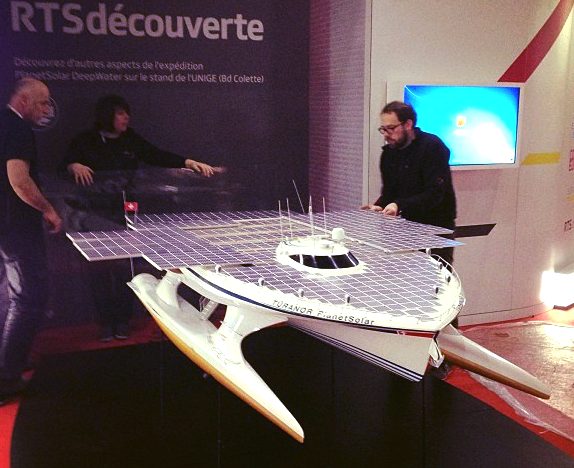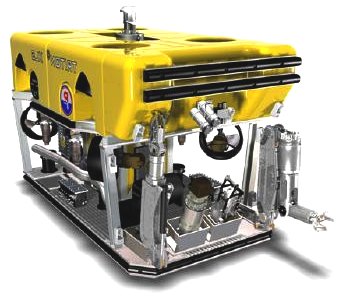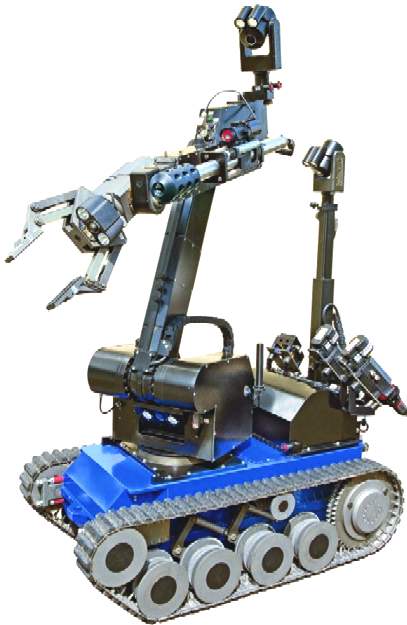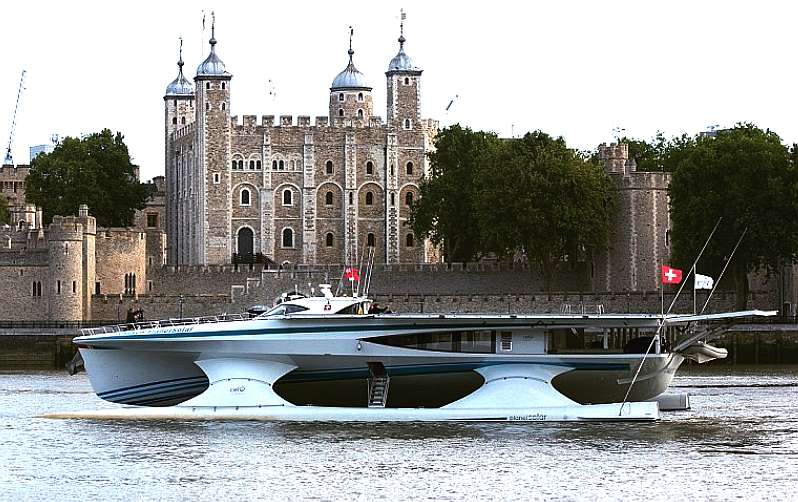|
PROJECT 'BLUEFISH' AUTONOMOUS TEST MODEL CONSTRUCTION
|
|||||||||||||||||||||||||||||||||||||||||||||||||||||||||||||||||||||||||||||||||||||||||||||||||||||||||||||||||||||||||||||||||||||||||||||||||||||||||||||||||||||||||||||||||||||||||||||||||||||||||||||||||||||||||||||||||||||||||||||||||||||||||||||||||||||||||||||||||||||||||||||||||||||||||||||||||||||||||
|
The model in the picture below is very small and although much was learned from it, especially as to stability and self righting. We've adopted it as a mascot. Tank and open water tests are to be conducted on a series of larger active-hull working models - by radio control to begin with, before handing over to computer autonomous robotic AI. We'll be relying on the same handsets that our friends at Amerang (Lancing, E, Sussex) provided many years ago - with digital proportional mixers from Hunter Systems. This project is now with Bluebird Marine Systems Ltd.
You can follow the build and testing of this revolutionary SWASH design on these pages. The space-frame superstructure that interconnects the flying accommodation pods is shown here made from ordinary 9mm plywood and 15mm pine dowel, is now being replaced with aluminium. The submerged hull section (and the trimaran outriggers) are to be made from thin wall aluminum tubing, as are the fore and aft foils of this 2m long model (not including wind gens. The specially shaped cones are to be molded from fiberglass as in previous models. There are six of these. The small model shown above is made of paper and card. The cones on this 150mm model are not specially shaped to induce laminar flow - but, remarkably, the hull worked reasonably well despite this.
SOLAR COLLECTORS
As with the full size craft, displacement calculations must be precise to allow for the full complement of solar panels to be carried with reserve buoyancy, in exactly the same way as for the real boat. On the full size boat, the wing panels will track the sun, and they will on this model. The challenge is to be able to carry the largest array possible, while still maintaining a stable craft. One that can withstand high winds, without capsize. It is an engineering challenge to design a lightweight structure with high performance.
On previous models, triple layer, laminated, amorphous cells were used, which are very inefficient (7%) and at this scale, expensive. We will start with these cells for (24 hr simulation) comparison purposes, then change to polycrystalline (16.5%) cells providing 100 watts max, for full speed tests. The solar wing panels are custom built from kits freely (cheaply) available online, but it does require some skill in the soldering and assembly doing it this way.
ACTIVE HULL
The outriggers are height adjustable. A feedback loop to the drive motors enables the onboard robotics to adjust the ride height to minimize wave drag. It does this by noting the energy used for a given velocity (load), then making adjustments and comparing the load. If the load increases, the robotics adjust the other way, until the optimum running trim is obtained. This function is independent of other autonomous functions, but the information is shared with Captain Nemo. To save energy this function is retested only once every hour, or as set up to retest when weather conditions change.
VARIABLE DISPLACEMENT
As with previous SolarNavigator test models, this model will be able to flood compartments to lower the vessel in the water. This is useful for three reasons.
* It increases the load carrying capacity of the boat - by having a bigger reserve to play with.
* It allows the boat to sink into the waves during storms, thus the main hull acts like a sea anchor.
* This function is used in conjunction with other buoyancy control functions to self-right.
Ordinary 12 volt car windscreen washer pumps are used to pump tanks. They are heavy, but they are also available off the shelf at Halfords and other popular suppliers.
SELF RIGHTING
Should a revolving storm be so severe as to cause capsize despite sea anchoring, then once the bad weather has passed, by pumping selected hull sections dry and flooding others, the vessel is able to self right. Not many ships can do this trick.
BATTERIES
The model will not carry batteries for running, only to be able to operate the radio controls and pump functions. Power for running will come directly from the onboard solar cells as seen above.
Instead of running batteries (an essential load leveling and storage device), a weight will be used in the central hull in the same position, which is also used for trimming purposes.
MOTORS
A tried and trusted Swiss Maxon motor will be used running through a 2:1 reduction gearbox.
PROPELLER
Model propellers are not very efficient. The basic rule of propellers is to keep the rpm low. Two bladed props are more efficient. Our tank tests on propellers indicate that with a good design, 70% conversion to thrust is possible. With the model, we will be lucky to achieve 50%.
R.O.V. CHAMBER
Three models are being constructed to be able to carry out tests in tandem at different facilities. One of the model hulls is bigger to house an ROV, which is designed to be launched and recovered without a crew onboard. Now that is what we call an ROV: Remotely operated via satellite. Follow the link to see how this works in theory. An ROV needs a large cable reel, the deeper it can go the larger the reel. For this reason we're adopting a modular design. Bluebird Marine Systems are developing this function. Robots will eventually free mankind from the mundane, or make safer some tasks. Where would bomb disposal teams be without robots? The miniature (model) ROV will have many of the features of its bigger counterparts.
SUMMARY
This model is a research test-bed - not just a tow-tank item.
DEVELOPMENT MODEL ROBOT TANK TESTBED COST ESTIMATES
Previous test models came in at under £1,000 each on average. The most expensive test model to date was the 2nd SWATH design, which in 1996 worked out at £3,000. Today that would be more than £10,000. The present model is likely to cost many times more to achieve full autonomous functionality with a COLREGs, collision avoidance system onboard. The following costs do not include labour.
A. TIMBER FRAME COSTS
To keep costs down, use popular off-the-shelf sizes. All of these items are available from any good timber merchant. We used Stamco in Eastbourne, who gave the keenest prices. We shop around for bargains.
B. PV PANELS, W.GENS, PROP MOTORS, BATTERIES and ACTUATORS
The product and suppliers of this equipment is classified.
C. NAVIGATION & COLREGS ELECTRONICS
The product and suppliers of this equipment is classified.
D. IP, PATENTS, DESIGN COPYRIGHT, TRADEMARKS
The following is for the UK and US, other filings are under review.
E. OVERHEADS, OFFICE, WORKSHOP, STORAGE, TRANSPORT & COMMS (12 MONTHS)
F. METALS
TOTAL PROJECT COSTS A - E (12 months, excluding labour)
Aluminium raw materials 6063T6 and 5251 H22 grades ordered June 21st 2013 from Aluminium Warehouse which company offers a friendly efficient service within the United Kingdom.
We must congratulate AW for some of the best packaging we've seen. The pallets between which the sheet is packed, really does protect the metal, which was also wrapped in corrugated cardboard - and that's what it is all about - a quality service. Pallets are expensive, so order as much as possible for each shipment. The sheet delivery came within days of placing the order.
We experienced some slight delay with the tubing, where the delivery driver deposited our shipment on the wrong side of the estate - an easy mistake to make and not the fault of AW. The ally tubing was also superbly packaged in cardboard tubes, and cellophane wrapping with neat cardboard end protectors. One aluminium tube was 5.0m long, and so was the cardboard tube it came in. Thanks AW.
PROJECT
BLUEFISH
TEST PROGRAM
TIMETABLE (1) Build tank test models (2) Test and collate results in tank and open conditions (3) Make any necessary adjustments to design (4) Retest model in tank and open conditions (radio controlled) (5) Incorporate any adjustments into final design (6) Begin autonomous fit-out (7) Autonomous systems check and drone function (8) Carry out autonomous trials (9) ROV build (10) ROV drone trials
LINKS
http://www.cyberiad.net/leo.htm
We are not EC or TSB grant supported. We are looking for development partners and customers: private, corporate, governmental or commercial sponsorship. If you'd like to see faster solar boats, please help us with this development.
The Turanor PlanetSolar cruising up the Thames river on its way to Canary Wharf on August 31 2013. PlanetSolar is currently the largest solar boat in the world, so the Guinness World Record holder, but she is many meters shorter than the Bluefish design and considerably slower. These are two world records just waiting to be broken once any Bluefish variant is launched.
|
|||||||||||||||||||||||||||||||||||||||||||||||||||||||||||||||||||||||||||||||||||||||||||||||||||||||||||||||||||||||||||||||||||||||||||||||||||||||||||||||||||||||||||||||||||||||||||||||||||||||||||||||||||||||||||||||||||||||||||||||||||||||||||||||||||||||||||||||||||||||||||||||||||||||||||||||||||||||||
|
This website is copyright © 2013 Electrick Publications. All rights reserved. The bird logo and names Solar Navigator and Blueplanet Ecostar are trademarks ™. The Blueplanet vehicle configuration is registered ®. All other trademarks hereby acknowledged and please note that this project should not be confused with the Australian: 'World Solar Challenge'™which is a superb road vehicle endurance race from Darwin to Adelaide. Max Energy Limited is an educational charity working hard to promote world peace.
|
|||||||||||||||||||||||||||||||||||||||||||||||||||||||||||||||||||||||||||||||||||||||||||||||||||||||||||||||||||||||||||||||||||||||||||||||||||||||||||||||||||||||||||||||||||||||||||||||||||||||||||||||||||||||||||||||||||||||||||||||||||||||||||||||||||||||||||||||||||||||||||||||||||||||||||||||||||||||||





